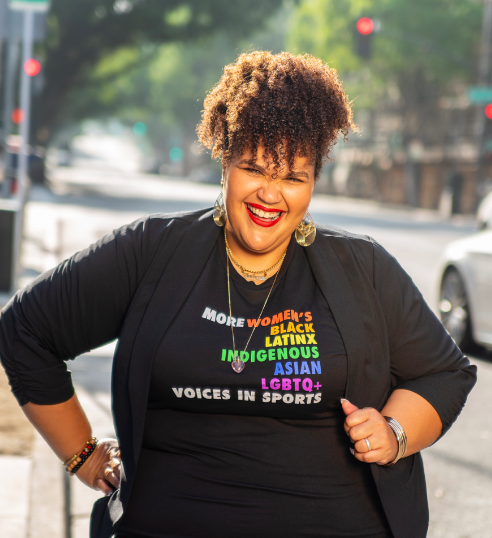This piece originally appeared in our newsletter, “Carnegie Corner,” Issue No. 7.
Renee Hess serves on The CI’s Board of Directors. She is an adjunct professor, community organizer, freelance pop culture writer and the Founder/Executive Director of the Black Girl Hockey Club, an organization that works to build an inclusive space for Black women in hockey.
CI: Was there a moment of exigence – a spark that lit the fire – that made you start the Black Girl Hockey Club (BGHC)?
RH: When BGHC held our first meet-up in Washington D.C. with the Capitals, I saw how talented and passionate Black women hockey fans really are. I knew that there was a potential to come together, create community, and do something to build the sport we love for a demographic that is traditionally ignored by hockey culture.
CI: What do you think needs to happen to give female, youth BIPOC players more pathways into the highest levels of the sport?
RH: In all levels of hockey, we need to create safe spaces for Black players to express their needs, concerns, and authentic selves. This summer in Toronto, BGHC Canada’s Executive Director, Saroya Tinker and BGHC U.S. Board Member, Sophie Jaques, hosted a hockey camp that not only addressed on-ice skills, but nutrition and hair care. For Black women, our hair is so important and it takes intentionality to have those types of outside-the-box conversations unique to Black communities. By creating authentic connections, hockey has the opportunity to help young women of color hockey players thrive in a space that hasn’t always made room for them.
CI: What do you consider the BGHC’s greatest success?
RH: BGHC’s greatest success is our scholarship program and the opportunity to help young Black girl hockey players build community with their peers. Our winter applications are due by December 31st, and we are always so excited to read the essays and get to know some of the Black girls playing hockey all across the world. We have given away scholarships from California to Kenya and have been able to help build a thriving community in hockey for BIPOC players.
CI: What is the BGHC’s biggest priority at the moment?
RH: Currently, BGHC is focusing on fundraising! We are still a young nonprofit, established in 2019, and we’ve been so busy participating in grassroots organizing, we haven’t had much time to fundraise. This season, we are hoping to hold community events and raise some money, so we can continue to fund our programming and grow the game of ice hockey.

CI: Was there a particular instance in your life you recall as the moment you fell in love with hockey?
RH: I often talk about discovering my love of hockey in Pittsburgh through the fan engagement there, but in reality, I fall in love with hockey more so these days through the eyes of the kids we serve at BGHC. They are passionate about the game; these girls love to play and to be on a team and they refuse to let race or gender be a barrier for them. I get inspired by each story I hear and I fall in love with ice hockey all over again!
CI: What do you deem as the most immediate challenges The CI must focus on to see more progress in making the sport more inclusive and welcoming to all?
RH: The most immediate challenge the CI and all organizations doing equity work in hockey lies in the changing of the old guard. There are too many leaders in hockey spaces who are unwilling to challenge the status quo and stand up for marginalized folks. We need to start holding our leaders accountable from the top down and reimagine what hockey leadership can look like.